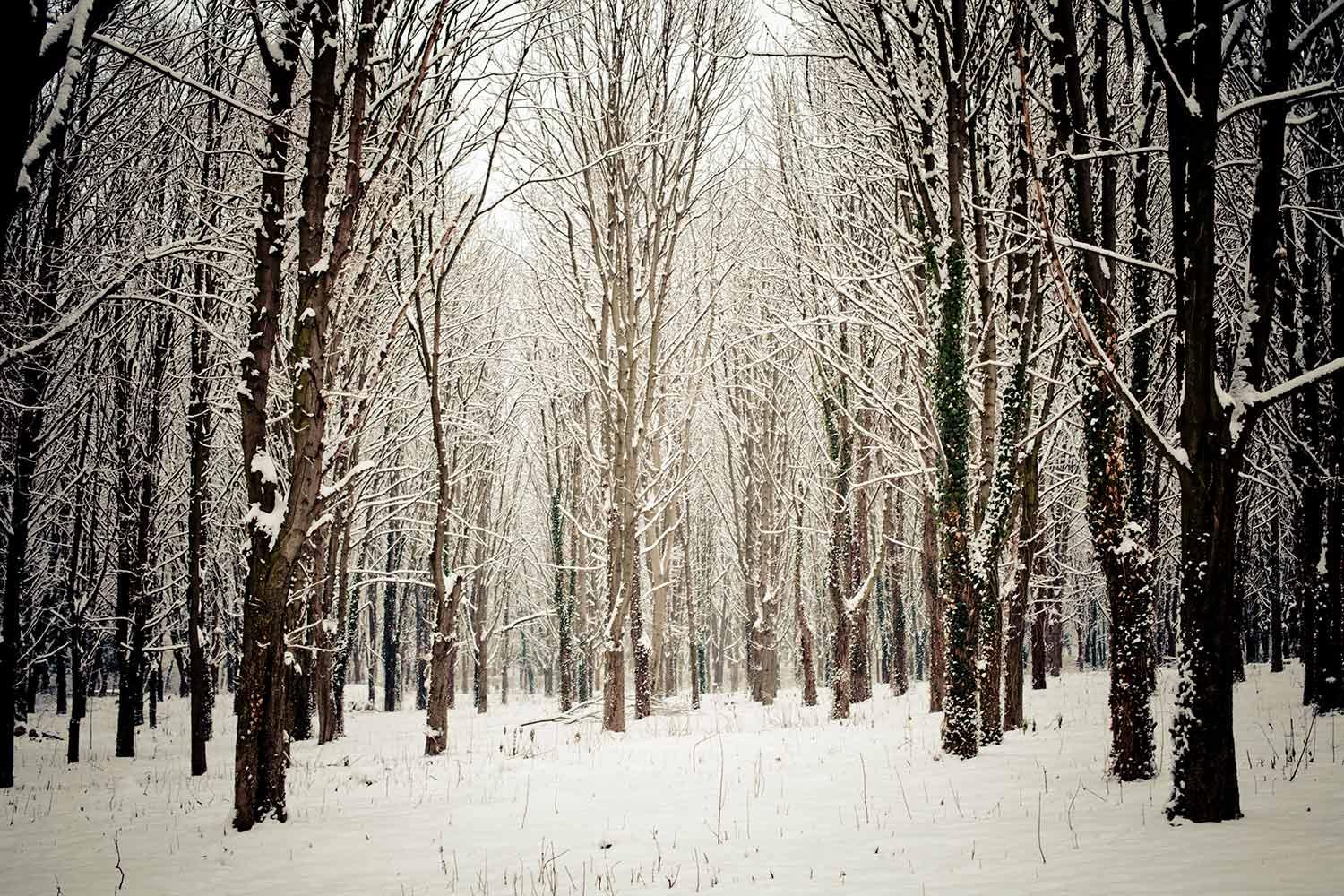
Therapeutic Use of the Outdoors
It’s not too cold outside! February is TR Awareness Month!
It’s all waiting for us out there
Studies have shown that engaging in activities outdoors can enrich and enhance mental and physical health (Anderson & Heyne, 2012, p. 326). It’s more than just fresh air, it’s an opportunity to challenge oneself and build confidence, to connect with others and relax, and to enjoy the beauty of nature while benefitting from exercise, learning new skills, and embracing all that the outdoors have to offer. (Song et al., 2016) Recovery, rehabilitation, and recreation are personal, as is one’s experience in nature. Walking, ‘Bathing’, biking, travelling from tree to tree....life is an adventure. Therapeutic use of the outdoors can be an inclusive, cost effective, and dynamic activity!
Mood Walks - a Canadian Mental Health Association Initiative
Forest Bathing
What is Forest Bathing?
Adventure Therapy
HOW CAN I ENJOY THIS FUN ACTIVITY?
All February is TR Awareness Month and it all about learning and trying new things. And what better way to do this than through adventure. But what is Adventure Therapy? Adventure therapy can be defined as “a treatment intervention in Recreational Therapy (RT) that has the capacity to produce a variety of physical, psychological, cognitive, and social outcomes” (Cordle et al., 2016, p. 75). So, what activities count as adventure therapy and how can I do them? According to Datillo (as cited in Cari, 2001, p. 290) adventure therapy can occur in either the wilderness or even in facilities like a gym. Examples of common activities include hiking, indoor or outdoor rock climbing, biking, canoeing, skiing, and many more. Have a look down below at one of the coolest adventure therapy activities.
(High Ropes Courses, 2020)
(Low Ropes Courses, 2020)
(Inclusion Rock Climbing, 2020)
YERKES-DODSON LEARNING CURVE
WHAT DOES THIS ALL MEAN?
The graph above is a learning curve created by Yerkes-Dodson called Yerkes-Dodson law. It is saying that learning and change occurs when we are challenged in an activity. We cannot be bored or to scared in order to obtain optimal learning. Diamond et al. (2007) highlights this best when explaining Yerkes-Dodson law saying “Strong emotionality can enhance performance under ‘simple’ learning conditions, such as when learning involves focused attention on a restricted range of cues” (p.3). Adventure therapy promotes this type of learning because it can be challenging at times but it can also make us learn more about ourselves. Ropes courses are one of the activities that provides the opportunity for change and learning because it pushes you outside your comfort zone.
CHALLENGE COURSE ADVENTURE BASED THERAPY
A fun and challenging activity in adventure therapy is high/low ropes which can also be called challenge courses. There have been may studies that have shown the benefits of this activity. It was shown in a study by Cordle et al. (2016) that ropes challenge courses helped in the development of self-efficacy (p. 75). It is also an excellent way to increase trust in others and in yourself, empowerment, teamwork, and recognize personal values which was observed in Cari et al. (2001, p. 297) research. You won't know until you try it. Have a look at this video to how it could impact your life.
ADVENTURE THERAPY! FUN FOR THE WHOLE FAMILY
FIND THE RIGHT ACTIVITY FOR YOU
References
Adventure Therapy. (2021). The Word Search. https://thewordsearch.com/puzzle/1862253/adventure-therapy/downloadable/
Anderson, L., & Heyne, L. (2012). Building spiritual strengths and resources. In Therapeutic Recreation Practice A Strengths Approach (1st ed., pp. 324–326). Venture Publishing, Inc.
Bissoux, B. (2018). Forest Bathing [Photograph]. https://www.tokyoweekender.com/2018/09/what-is-forest-bathing-and-can-it-really-help-heal-us/
Canadian Mental Health Association. (2018). MoodWalks Ontario. MoodWalks.Ca. https://youtu.be/bEh8_R60RpU
Cari, E. A. (2001). Adventure therapy with girls at-risk: Responses to outdoor experiential
activities. Therapeutic Recreation Journal, 35(4), 289. Retrieved from https://search.proquest.com/scholarly-journals/adventure-therapy-with-girls-at-risk-responses/docview/218648438/se-2?accountid=39951
Cordle, J., Van Puymbroeck, M., Hawkins, B., & Baldwin, E. (2016). The effects of utilizing
high element ropes courses as a treatment intervention on self-efficacy. Therapeutic Recreation Journal, 50(1), 75-92. http://dx.doi.org/10.18666/TRJ-2016-V50-I1-6439
Das, K. (2020). Forest Bathing [Photograph]. https://sivanandayogafarm.org/what-is-forest-bathing/
Datillo, 1 (2000). Facilitation techniques in therapeutic recreation. State College, PA: Venture
Publishing.
Diamond, D. M., Campbell, A. M., Park, C. R., Halonen, J., & Zoladz, P. R. (2007). The temporal
dynamics model of emotional memory processing: a synthesis on the neurobiological basis of stress-induced amnesia, flashbulb and traumatic memories, and the Yerkes-Dodson law. Neural Plasticity, 2007, 60803. https://doi.org/10.1155/2007/60803
Fishwick, S. (2019). Forest Bathing [Photograph]. https://www.standard.co.uk/lifestyle/forest-bathing-the-natural-way-to-solve-city-stress-a4169321.html
Forest Bathing International. (2020). Forest Bathing Podcast. http://www.forestbathinginternational.org/podcast.html#
Han, J.-W., Choi, H., Jeon, Y.-H., Yoon, C.-H., Woo, J.-M., & Kim, W. (2016). The effects of forest therapy on coping with chronic widespread pain: Physiological and psychological pifferences between participants in a forest therapy program and a control group. International Journal of Environmental Research and Public Health, 13(3), 255. https://doi.org/10.3390/ijerph13030255
Hansen, M. M., Jones, R., & Tocchini, K. (2017). Shinrin-Yoku (forest bathing) and nature therapy: A state-of-the-art review. International Journal of Environmental Research and Public Health, 14(8), 1–48. https://doi.org/10.3390/ijerph14080851
Healing Forest. (2020a). Forest Bathing – What, How, Where? A Beginner’s Guide. https://healingforest.org/2020/01/27/forest-bathing-guide/
Healing Forest. (2020b, January 13). Forest Bathing - What, How, Why? | Introduction to Japanese Shinrin-Yoku [Video]. YouTube. https://www.youtube.com/watch?v=rSvvhLvFrVE&feature=emb_logo
[High Ropes Course]. (2020). Facebook.
https://www.facebook.com/AdventureworksAssoc/photos
Home. (2020, December 3). Ontario Camps Association.
https://www.ontariocampsassociation.ca
[Inclusion High Ropes Course]. (2020). Facebook.
https://www.facebook.com/AdventureworksAssoc/photos
[Inclusion Rock Climbing]. (2020). Facebook.
https://www.facebook.com/AdventureworksAssoc/photos
[Low Ropes Course]. (2020). Facebook.
https://www.facebook.com/AdventureworksAssoc/photos
Nature and Forest Therapy. (2020). Virtual Forest Therapy Walks. https://www.natureandforesttherapy.org/virtual-forest-therapy-walks
Roe, J. (2010). The restorative benefits of walking in urban and rural settings in adults with good and poor mental health. PubMed. https://pubmed.ncbi.nlm.nih.gov/21094074/
Song, C., Ikei, H., & Miyazaki, Y. (2016). Physiological effects of nature therapy: A review of the research in Japan. International Journal of Environmental Research and Public Health, 13(8), 781. https://doi.org/10.3390/ijerph13080781
Treetop Trekking. (n.d.). Hamilton. https://treetoptrekking.com/park/hamilton/
VA’s Recreation Therapy Program. (2019, July 1). [Video]. YouTube.
https://www.youtube.com/watch?v=Mh2YWra0Cug&list=PL1VNhCpXErQr3mPYaGVfJV8ppqVbT4gHW&index=2
West, M. G. (2000). Exploring the Labyrinth: A Guide for Healing and Spiritual Growth (Illustrated ed.). Harmony. https://archive.org/details/exploringlabyrin0000west
Yerkes-Dodson Law (YDL). (n.d.). [Photograph]. Sharp Brains.














